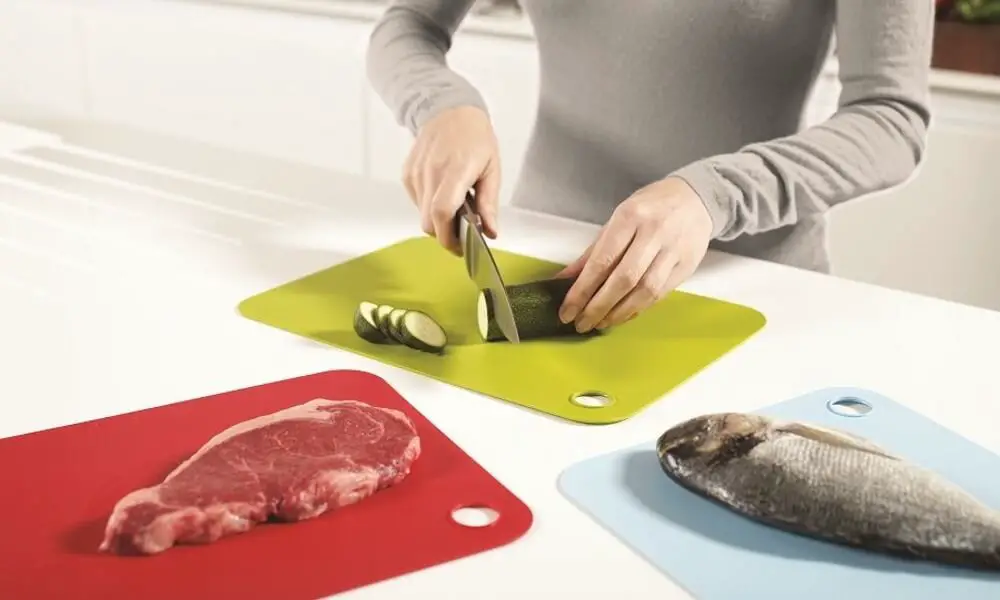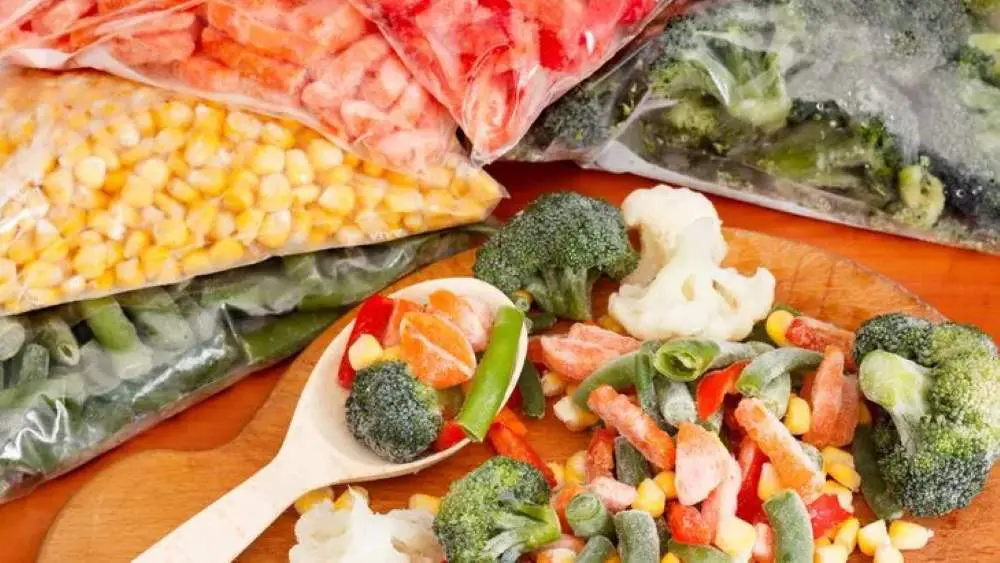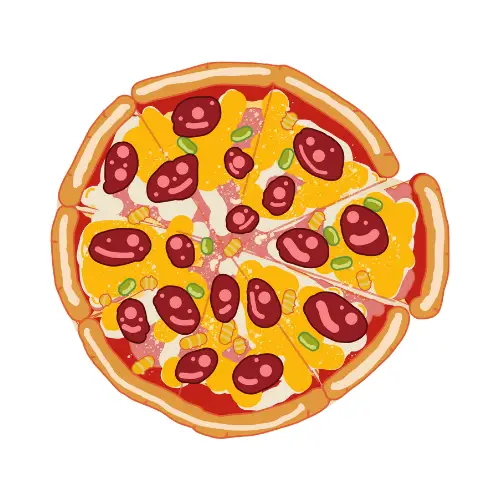Honestly, I’m a little afraid of getting embarrassed in front of my family or guests if there’s something wrong with my pizza that I make. And judging by your comments, it’s not just me who’s worried about how to tell if pizza is undercooked. Our mission today is to highlight this question.
And it’s more serious than uneasiness around the housemates or non-photogenic pizza. Undercooked dough is a health issue. Undercooked dough can be the cause of stomachache or even some diseases.
That’s why it’s important to figure out how to detect when a pizza dough is not quite ready. And, of course, how to finish it if you need to.

What’s Wrong with Undercooked Pizza Dough?
Health experts warn against leaving cooked food at room temperature for more than two hours. Your dish may not only please you, but also many of the bacteria in the environment.
With food that has not been heat-treated or undercooked, the case is even more pressing. Pathogenic bacteria can enter your food not only from the environment but can also be found immediately in raw food.
Raw dough is the perfect environment for the growth of yeast, which is why the dough rises. Yeast is a microorganism classified as members of the fungus kingdom. Trust me, there are many among the yeast companions who are not so harmless.
What germs to watch out for
The most common bacteria are E. coli and Salmonella. These microorganisms can adapt well and multiply easily. But the good news is that a simple heat treatment, whether baking, frying, grilling, boiling, or pasteurizing, is completely neutralizing.
There are other ways to get rid of bacteria in food, but they are less effective. These include smoking, salting, extreme freezing, and even using of spices.
For example, onions, garlic, ginger, chili pepper, turmeric and some other oriental spices inhibit the growth of harmful microbes in food. Spicy food in hot climates is not only a matter of taste, but also a necessity.

Which raw foods require cooking
When mentioning raw foods, we usually think of something like a raw food diet, but this is not always the case. Have you ever heard of raw flour?
Flour is a raw product; it is simply finely ground grain in which any microbes are very comfortable to exist. Accordingly, unbaked pizza dough can cause stomach ailments or even food poisoning.
By the way, let’s say a few words about eggs. The classic pizza dough recipe does not contain eggs, but still. Raw eggs have traveled a long way from a chicken to your refrigerator shelf, so you shouldn’t eat them without temperature treatment.
The same caution is required with meat, chicken, fish, and seafood. Raw toppings can also be a cause of stomach problems.

How to counteract bacteria
There are some basic rules for dealing with germs that you most likely already know. Just in case, let’s review:
- Obviously, you should only eat foods that are not past their best before date.
- Don’t leave foods that require refrigeration at room temperature.
- Use different cutting boards and knives for raw and cooked foods.
- Keep foods in the fridge in airtight containers or cover them with lids or cling film.
- Stick to the recipe cooking time and temperature.
Now, from the general information, let’s get more specific about undercooked pizza dough:
- Be careful with flour, it is very volatile and can easily get on the cooked food.
- Do not taste the raw dough, even if you need to know if it is well salted.
- Wash your hands after working with the dough.
- Cover the dough you have left to rise with a bowl or plastic wrap. This way the yeast works better, and the dough is protected from outside germs.
- Avoid undercooked toppings.
- Here’s a little video that will help you fight off bacteria, and keep your kitchen looking gorgeous
Here’s a little video that will help you fight off bacteria, and keep your kitchen looking gorgeous.
How to Know if Pizza Dough Is Not Baked Enough
There are several signs you can see if pizza is undercooked.
And the main sign is the color of the pizza crust. The crust should be golden brown, and the bottom of the pizza should be a little darker if you have dusted with flour. If the pizza crust has a pale appearance and the color seems more white than golden brown, then the pizza is still not ready.
It also makes sense to pay attention to the state of pizza toppings. If the toppings do not have a baked appearance and the cheese does not look appetizingly melted, then this pizza is not quite ready.
Examine the surface of the pizza carefully to see if it is evenly cooked. Sometimes the pizza edges, where there is less toppings, are cooked better than the center.
In addition to the visual signs, pay attention to the smell as well. If the aroma is not intense enough, it is also a sign of undercooked pizza dough.
What Could Be the Reasons for Raw Pizza Dough
Anticipating a pizza night, you took the pizza out of the oven and realized that the soggy pizza didn’t look appetizing. So, it became clear that the pizza was undercooked. We need to determine what the reason is, to correct the situation.
The first reason is the equipment
First, make sure that your oven is fully operational, and that the oven settings are on top and bottom. It is possible that this equipment is to blame for the pizza not being cooked evenly.
If the top heater is hotter than the bottom heater, place the pizza lower than on the middle oven rack. And if necessary, do the opposite to balance the heat, and place your pizza on the above medium oven rack.
Besides the mode, make sure that the oven temperature is correct. This is a difficult situation, and it looks like you may have to start the cooking process all over again.

The second cause is the improper cooking utensils
When making pizza, it is very important to preheat the oven in advance and use a pizza stone or pizza steel. Pizza stones are designed precisely to instantly evaporate excess moisture from the dough and seal the crust.
If you are using a regular cookie sheet or tray, leave them inside the oven so they are hot enough to bake the pizza crust. To get your raw pizza dough into the oven, use a pizza peel or our tips on how to get by without one.
The third cause is excess fluid
Then, if the toppings are ready and the soggy dough doesn’t look good, a possible reason is excess moisture. This could happen if you used too liquid pizza sauce or too much sauce. Something about evaporating excess moisture is in this post.
Another possibility is wet ingredients. Sometimes the salt or sauce can make vegetables too juicy and harm the cooking of the dough. Be careful with mushrooms, they give off a lot of liquid when cooking. Common champignons contain 93% water, other types of mushrooms can be found here.

The fourth reason is the toppings
Sometimes it happens that there are too many toppings, or they are unevenly laid out. Too thick a layer of filling can leave the pizza dough soggy.
If the toppings have been frozen, you should defrost them in advance. It is recommended to put all the ingredients to pizza at the same temperature. Frozen foods give too much water, and the crust is no longer what it should be.
The fifth reason is cold dough
The same goes for dough. If cold pizza dough is used to cook pizza, the endeavor may fail. The yeast will not have time to rise the pizza dough. You may get undercooked pizza dough and the pizza will be flat and soggy.
It only takes 20 minutes to cook the pizza, and you can’t let half of that time be spent warming up rather than baking it. Setting a longer time damages the toppings and dries them out.

The sixth reason is improperly rolled pizza dough
Obviously, the center of the dough is more hydrated because of the sauce and toppings. The edges most often have less sauce and filling. This should be taken in mind when rolling out the dough.
The center of the circle should be thinner and the edges thicker. This avoids non-baking in the center and burning at the edges. This can be achieved by hand tossing pizza dough.
How to Fix an Uncooked Pizza
It’s a great thing if you can tell at a glance that the pizza needs to spend a little more time in the oven. To fix undercooked pizza dough, but not to dry out the toppings, place the pizza on the lowest oven rack. You can brush the surface of the pizza with olive oil just in case.
It’s more problematic if the pizza looks cooked on the outside, but there’s raw dough on the inside. This is usually revealed when you cut the dough. Not only strands of melted cheese are left on the knife, but also viscous dough.
To fix undercooked pizza dough from the inside, cut the pizza into portioned slices. This way, oven heat gets to the center of the pizza better. Next, place the pizza back in the oven, but set the oven temperature slightly lower. If you usually cook at 450 degrees, set it to about 400 degrees. Be sure to continue cooking on the pizza stone, just move the oven rack to the lowest level.

How to Make Sure Pizza Is Always Baked
Undercooked pizza dough is not difficult to prevent. Follow these little tips and the pizza will always cook to perfection!
The most important tip is to preheat your oven and pizza stone. Cooked properly, the bottom of the pizza never has soggy dough. A piping hot pizza stone saves you from having undercooked pizza even if there have been small errors with the sauce, toppings, or rolling.
To avoid a soggy dough, use concentrated sauce. Spaghetti sauces or just tomato sauce can be too watery. They can be used with a little tweaking. We mentioned this once before, check it out if you haven’t already seen it.
Don’t stray too far from your recipe
There’s a reason pizza chains have been following the same recipe for years. If you’ve found a good combination for your home oven and pizza oven, memorize it or, better yet, write it down.
Too much toppings are the most common cause of undercooked pizza inside the center. To cook evenly from the edges to the center, spread the filling in a thin layer, not a pile in the middle. Weigh the toppings so you don’t put too much in.
This is where the advice to always toss the pizza and roll the dough in the air should have been, but we’ll be realistic. Just move the dough with your hands from the center to the edges before spreading the sauce. Concentrated sauce, right?
One last thing, don’t use cold dough or frozen toppings. The secret to a well-crusted pizza is to cook it as quickly as possible over maximum heat. Defrosting and heating cold will waste time and you’ll get an undercooked pizza. So, just defrost the amount of toppings you need ahead of time.

FAQ: How to Tell if Pizza Is Undercooked
Can you eat slightly undercooked pizza?
No, you shouldn’t eat even slightly undercooked pizza. It can cause stomach effects up to and including poisoning. Fully cooked pizza dough is not moist, viscous or sticky. If you have any of these signs, you should leave the pizza to be cooked to perfection.
How can you tell if a pizza is cooked?
Inspect the pizza from all sides and make sure it is evenly cooked and the pizza crust has a tempting golden brown color. Also pay attention to the toppings so that they are quite baked, and the cheese is melted.
How can you tell if pizza dough is done?
You can tell if the pizza dough is ready by the color and texture. You can see the color of the crust right away, but to know the color of the bottom you have to try a little harder.
The color of the crust should be golden brown or slightly brownish. The texture of the dough should be airy and crispy. A pale dough appearance and chewy texture should alert you.
Can you get sick from eating undercooked pizza dough?
Yes, you definitely should not eat undercooked pizza dough. And slightly undercooked pizza dough is also best not to taste. Undercooked dough causes stomach pain and digestive distress. In severe cases, it can even cause poisoning. Only eat pizza that is fully cooked.
Conclusion
The main point of this article is that don’t be afraid to admit that the pizza is undone. It’s totally minor compared to the fact that undercooked pizza causes a lot of trouble for good health. It’s very easy to fix an undercooked pizza, just give it a few more minutes in the oven to become fully cooked.
We’ve identified six factors that can cause undercooked pizza dough. But the only way to fix undercooked pizza is to reheat pizza. Brush the edges of the pizza with olive oil if you have a fear of burnt crust.

A top tip to prevent undercooked pizza dough is to use a pre heated pizza stone or pizza steel. Its piping hot surface gets quickly rid the dough of excess moisture and stickiness.
Let your pizza cooking be nothing but fun!

